Me 163 kits and accessories
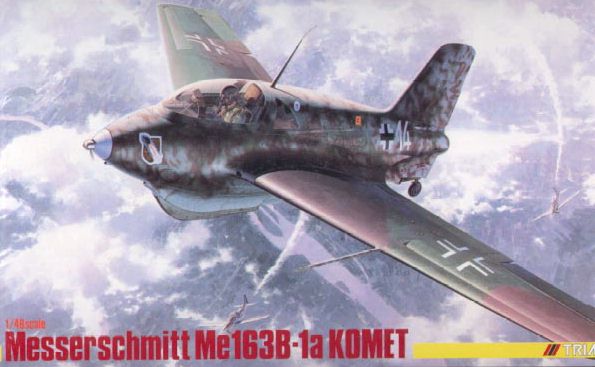
Around 1990 Trimaster issued a number of models that were probably the best detailed models then available. They included very nicely detailed injection moulded parts, plus photo-etched and white metal parts. Unfortunately the engineering and fit was not always up to the same high level. Their Komet model does not suffer from these problems however, and was a very fine kit, although rather expensive. Trimaster didn't survive for long, and the moulds went to Dragon/DML in Hong-Kong. Hasegawa issued it briefly in comics markings. The kit is currently (1999-) issued by Revell-Germany for about a third of the original Trimaster price.
Accuracy
I haven't read many negative comments on the model's accuracy. When I started building one myself I found a few small problems myself.
the most common problem reported is the fit of the nose cone
the panel line on the front spar should be filled (wooden wings have very few panel lines)
note that the slot is fixed (it is not a movable slat), and no panel lines are present at the inboard and outboard connections with the wing
the lower gun bay panels have raised strips around their perimeter. These do not exist on the real thing
the wing root fairings are too thick at the rear
one panel line should be added to both sides the vertical tail, running horizontally just above the rudder actuator fairing
on my (Revell) example the lower fuselage is 0.5 mm longer than the upper fuselage, leading to some fit problems at both ends
The detail parts
The original Trimaster issue of this model contained the largest number of detail parts made of white metal and photo-etch. In the subsequent reissues of Dragon/DML and then Revell-Germany these were gradually replaced by injection moulded parts. To show the differences between these parts, they are shown below. The scans were kindly provided by Neil Royes.
The left PE fret is 0.3 mm thick. The four large horizontal components are landing skid and landing skid bay parts. The banana shaped part on the left is the sheet metal seen through the rear-view windows. Top parts from left to right are canopy hand grip, Morane antenna mast, and two supports for the armoured windscreen. The right PE fret is 0.1 mm thick and contains four belt parts, the generator prop, a canopy open lock and radio wire for the pilot figure; the small part on the right is not used.
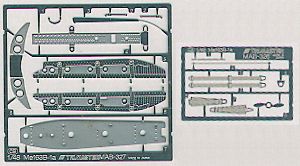
The white metal parts (shown in their plastic bag) consist of a seat, a dolly axle (center), and a three component tail wheel strut.
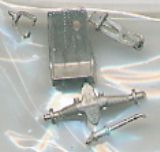
Decals
The Trimaster decal sheet is much more extensive than those of the Dragon and Revell-Germany reissues. It has decals for three EK16 Komets ('White 04', 'White 05' and 'White 06'), the mottled 'White 14' and 'White 18', Späte's red V41/'PK+QL', and the Canadian museum example 191914 'Yellow 26'. Furthermore it contains extra set of yellow code numbers and three sets of Werknummers. The scan was again provided by Neil Royes.

Finished models
Concluding this report on the Trimaster Komet, three very well built Trimaster kits by Floyd Werner, Allan Mayer and Kent Eckhart, Jr. :
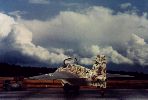
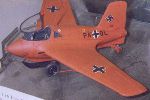
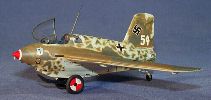
See also the pages about the Dragon, Hasegawa and Revell Germany reissues.
Return to Me 163 kits and accessories page






